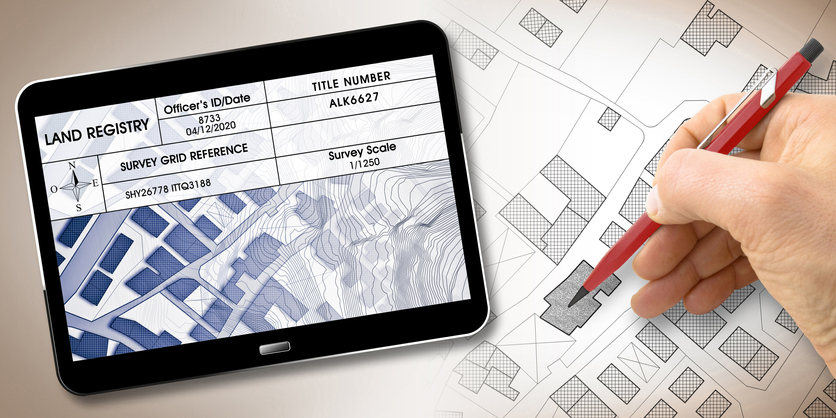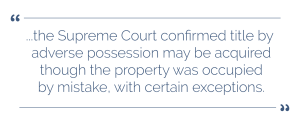Updated on January 23, 2024
Establish Adverse Possession Under a Mistaken Belief and Payment of Taxes
In this post we explore a way to establish adverse possession. We start by introducing the concept, then we highlight a Supreme Court case where the California Supreme Court analyzed two of several elements required to establish adverse possession.
How Long to Establish Adverse Possession in California
In the State of California, it is possible to acquire ownership of land owned by another by “adverse possession,” which has also been commonly described as “squatter’s rights.” However, simply occupying someone else’s land is not sufficient to establish ownership.
Rather, there are several key elements that the adverse claimant must satisfy over a period of five years to prevail. Specifically, the adverse claimant must show that for a period of five years, they have timely made all tax payments and engaged in open and notorious use or possession that is continuous and uninterrupted, hostile to the true owner and under a claim of title. (Sorensen v. Costa (1948) 32 Cal.2d 453, 458.)
A California’s Supreme Court Case Analysis
While these elements may seem fairly straightforward, there are a lot of nuances to each element. In the case of Gillardi v. Hallam (1981) 30 Cal. 3d 317, the Supreme Court of California analyzed two key issues arising out of claims by one landowner seeking to prescriptively or adversely acquire rights to use the land of the neighboring landowner.
Specifically, the Supreme Court addressed issues related to: 1) the ability of an adverse claimant to establish adverse possession when they mistakenly believed they owned the disputed area; and 2) the payment of assessed taxes.
Element of Hostility
With respect to the first issue involving the required element of hostility, the Supreme Court confirmed title by adverse possession may be acquired though the property was occupied by mistake, with certain exceptions.
This is based on the observation that most cases of adverse possession commenced in mistake and that it would be against public policy to require a deliberately wrongful possession to establish hostility.
Payment of Taxes
With respect to the second issue involving the payment of taxes, the Supreme Court observed that when adjoining lots are assessed by lot number, the claimant to the disputed portion often cannot establish adverse possession because he cannot establish payment of taxes.
However, in unlikely event there is an error in the description of the assessment roll, if the claimant can establish the error and his payment of taxes, the claimant can potentially show that they nonetheless paid the taxes.
In addition, in very rare instances, whether or not the claimant paid taxes could be affected by whether there is direct evidence that the assessor based the assessments not on the legal boundary lines, but valued the land based on the land and improvements visibly possessed by the parties.
Schorr Law, APC has experience navigating the nuances of claims involving adverse possession and prescriptive easements. Adverse possession cases can be complex, with varying specifics and additional elements, depending on each case’s circumstances.
Consulting a qualified real estate attorney in Los Angeles is strongly recommended if you are considering or involved in an adverse possession case in California. Contact us today to have our attorneys evaluate the details of your case. You can fill out our contact form, call us at 310-954-1877, or text us at (310) 706-2265.
Also Read –
- Adverse Possession and Permission to Use the Property
- The Difference Between Quiet Title, Easements, and Adverse Possession
- What Is Adverse Possession – A Basic Overview
- Adverse Possession Requirement: Property Taxes
- Monitoring Your Property for Adverse Possession
- Schorr Law Wins Multi-Million Dollar Trial Involving Adverse Possession

